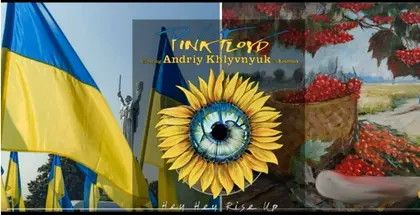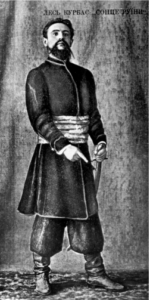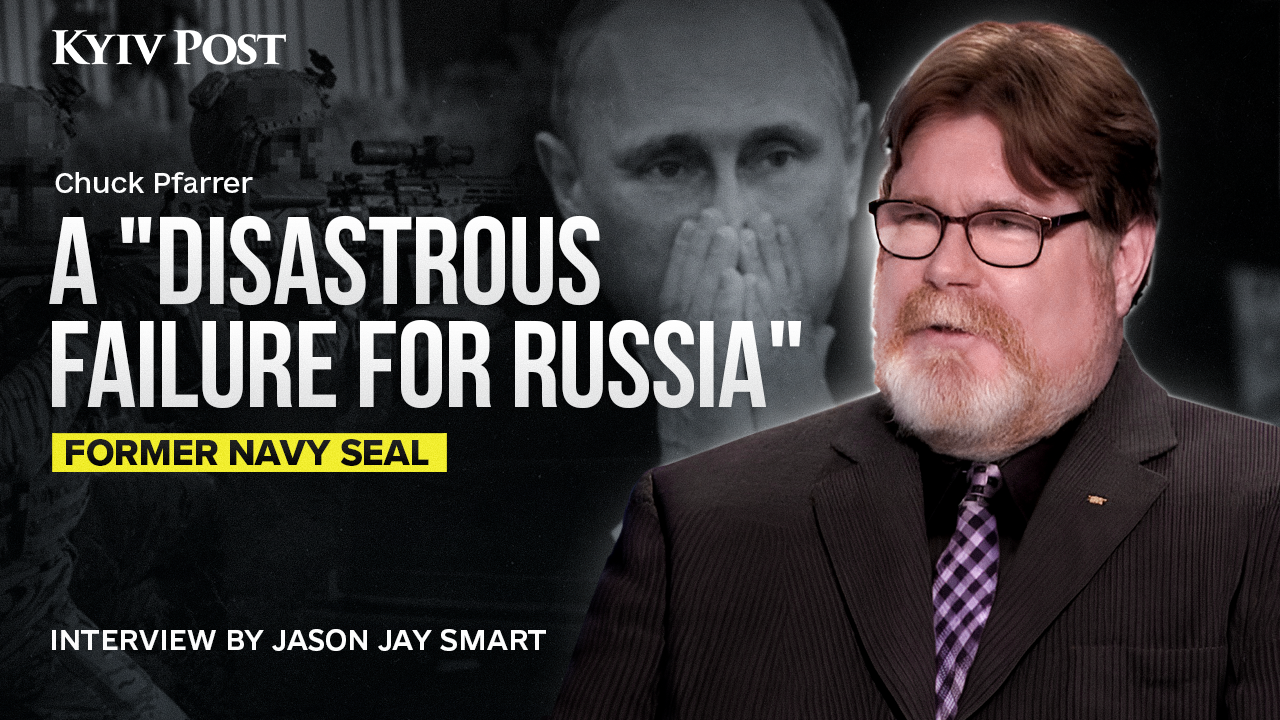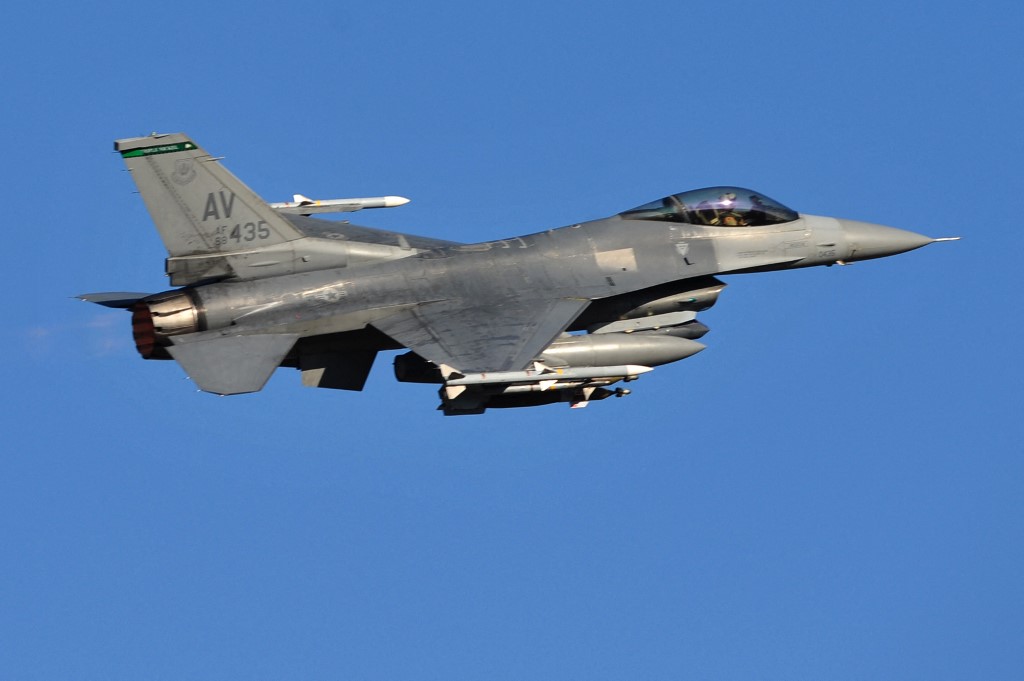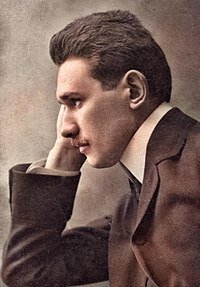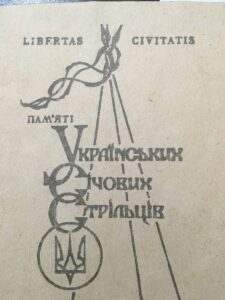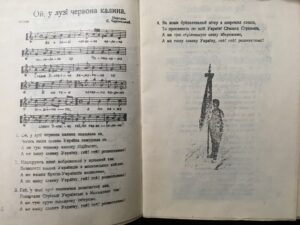Putting the Hymn into Context
Like many other individuals following events in Ukraine, I have seen the viral video of the lead man of Boombox, Andriy Khvylnyuk, on St. Sophia’s Square in Kyiv. He was dressed in military fatigues performing a Capella version of the song Oy u luzi chervona kalyna [Oh, the Red Viburnum in the Meadow]. Khvylnyuk coincidentally released this video on February 27, which would have been my late father’s 95th birthday and that is when I first heard it. However, I felt that by him singing only the first verse of the song, he missed out the context of Russia’s unprovoked invasion of Ukraine on February 24, 2022. As someone who was raised to be a Ukrainian patriot, my understanding of the song in its full version is about a long and difficult struggle with Moscow; and not just in the early part of the twentieth century but stemming back to the second half of the mid-seventeenth century.
JOIN US ON TELEGRAM
Follow our coverage of the war on the @Kyivpost_official.
Contemporary Wartime Context
Only five days later South African artist David Scott, also known by his stage name The Kiffness, released his remix with Khvylnyuk and announced that all royalties would go to aid Ukraine. On his YouTube channel he wrote: “The response to this song has been incredible! In just one day the song has accrued over $7,000 in royalties from Facebook, Bandcamp & You Tube. It gives me great pleasure to give all of that back to Ukraine’s aid.”
On Thursday April 7, 2022 while working from home with my local rock station on, I first heard the story of how David Gilmour of legendary Pink Floyd had decided to support Ukraine after being inspired by Khyvlnyk’s viral video. The song “Hey, Hey, Rise Up!” was to be released at midnight that same night.
The following day Gilmour was interviewed by Ken Bruce of the Raised on Radio YouTube channel. Gilmour’s connection to Ukraine became apparent. His daughter-in-law, artist Janina Pedan, is Ukrainian.
“This whole war is a very, very frustrating, and terrible thing to be happening in the modern world today, with a major power like that attacking a small independent nation. Anyway, it struck me that we could make some music with this [reference to Khvylnyuk’s original video] and I started working on it in my studio, trying to turn it into something and I thought that it would be great if we could put this out as Pink Floyd. I called Nick [Nick Mason, drummer, a founder of the group] and said, ‘Hey Nick, do you want to come and play on a track for Ukraine? And we’d put it out and he said, ‘Thrilled! I’d love to.’ So that is where it all started,” Gilmour told his host. Pedan inspired the artwork for the single, which contains the national flower of Ukraine, the sunflower, he underlined. All proceeds of this release will go to the Ukraine Humanitarian Relief Fund.
Historical Context
I alluded above to the historical importance of this song often being referred to as traditional, though it also has its own backstory. That story is rooted in a theatrical production written by Vasyl Pachkovsky some time during 1907-08 as a submission to a competition held by Prosvita, a society for preserving Ukrainian culture (literally ‘enlightenment’), which existed as a counter balance to the Russophile and anti-Ukrainian tendencies of the latter half of the 19th century. ‘Sontse Ruyiny’ [Sun of Ruin], a five act play, received criticism from many critics. Members of the competition jury expressed mixed feelings about the work: “”The best work of those sent to the competition”, which he wrote “with talent, but with great stage defects.” The commission drew attention to the excessive volume of the work, to the long monographs and dialogues,” and thus it would not be given a stage performance.
But the stubborn Pachkovsky did not agree with the critics and decided to submit his work to another competition announced by the regional government of Galicia of the Austro-Hungarian Empire. His stubbornness paid off in the form of being selected as one the best 16 submissions, and a prize of 700 crowns, the monetary unit of the state. The theatrical group Ruska Besida [Rusyn Conversation] which was renamed Ukrainian Besida [Ukrainian Conversation] in 1928, premiered the play on January 28, 1912, under the directorship of Yosyp Stadnyk. The closing number of the first premiere was the Chy ya v luzi kalyna bula [Was there not Viburnum in the Meadow]. Some historians have suggested the following link of a contemporary version of the original song which closed Pachkovsky’s play for comparison here. It is far from being the uplifting song we hear from Khvylnyuk and many other artists who have performed it in its entirety.
Winds of Change
By the time the first iteration of the play returned for a performance in Lviv on April 13, 1913, the lead role was played by a young actor born in Sambir who’d studied drama at the Vienna Conservatory. His name was Les Kurbas, and he would play an important role in Ukrainian theatrical expression, theory and thought, even to this day!
Pachkovsky’s drama was, in fact, a tragedy about a period in Ukraine’s history known as the period of ruin, the failure of the Ukrainian state and being divided between the Lithuanian-Polish Commonwealth and Muscovy and the great deal of blood shed for the territory that was Ukraine at the time. This period lasted from the time of the death of Hetman Bohdan Khmelynytsky (1657) to the start of the Hetmanate of Ivan Mazepa (1687). The focus of the work is on Hetman Petro Doroshenko, who was in his post from 1665-1676. Though in the play “The powerful, inwardly steadfast Cossacks and hetmans were replaced in the Ukrainian historical drama by a reflective hero who seeks and doubts, a hero who is not only confident in the rightness of his actions, but also with a heightened sense of guilt and remorse,” wrote theatrical specialist Iryna Volytska in a piece about the Theatrical youth of Les Kurbas and the difficulty of forming his individuality…” cited in a 2012 publication entitled Life and Creativity of Les Kurbas.
One of the first critics of the premiere in 1912 was the youngest of thirteen children, Stepan Charnetsky, from the village of Shmankivtsi, Chortkiv District, Ternopil Region. While he lavished some praise, he also criticized Stadnyk in his review published January 31, 1912 in Dilo – a leading publication of the day: “[He] failed to reveal its dramatic structure and innovative stylistic features, staged in the style of Ukrainian domestic drama,” wrote Charnetsky. At the time, Expressionism was becoming popular in theatre, and I believe this is what Charnetsky meant.
In the spring of 1913, Charnetsky became artistic director and producer of the theatre that had premiered the play just over a year earlier and he wrote: “”The author gave me a free hand to cut my long, and extended, but beautiful drama. I did it by cutting it by more than one third and replacing the song “Oh, don’t be surprised, good people” with the new song “Oh, the Red Viburnum in the Meadow”, for which I composed the melody myself, and Mykhaylo Kossak created the arrangement for wind and brass instruments. The play Sun of Ruin was again a theatrical holiday for both the audience and its friends!” Though Charnetsky was a poet, theatre and music critic, as well as a theatre director and producer, he is best known for authoring the anthem of the Ukrainian Sich Riflemen.
My Relationship With The Full Version of the Song
When I was young and many years before I lost my father at the age 16, we would sing various songs of the Ukrainian Sich Riflemen when on our travels. The riflemen were volunteers, just like the young men who sacrificed their lives for Ukraine at the Battle of Kruty in January 1918.
My father was an Ostarbeiter who never had the opportunity to return home to an independent Ukraine. His life was cut short and as a result I lost part of my cultural heritage. I decided to battle on. As humans we don’t always realize what we’re losing, and to quote a wonderful song by Canadian Jody Mitchell:
They paved paradise and put up a parking lot,
Hey now, now, don’t it always seem to go,
That you don’t know what you got ’til it’s gone,
They paved paradise to put up a parking lot.
Now, instead of paving, Moscow bombs Ukrainian cities, kills innocent individuals, and its soldiers decide to pillage and steal. In addition, one of their choices is to rape young children – these are not orders of Putin but choices made by very bad people! They are war criminals.
I have fought battles with this type of scum since the first day the KGB came into the backyard of my brother’s godfather and threatened our fathers for being involved in any action against the USSR. Putin is KGB, and I haven’t trusted him in over 20 years, why have others not understood? Moscow has been pathological liars for over three centuries, why would they change now?
And now a look at the grit of the song that has attracted a great deal of attention to Ukraine. Even for sales people in my native Montreal.
It was when I first visited Ukraine in July 1990 that I was fully introduced to this song. It was through my friends at the Studentske bratstvo [Student Brotherhood] of Lviv. I was gifted a small publication, illegal during Soviet times, entitled In Memory of the Ukrainian Sich Riflemen.
I remember my newly-found friends in Ukraine in the summer of 1990 singing this song regularly as part of their repertoire in their full, not shortened, version, which has always been presented thus, though the last verses are not in the music manuscript depicted below:
Oh, in the meadow Red Viburnum has bent down low,
For some reason, our glorious Ukraine is in sorrow.
And we’ll take that Red Viburnum and we will raise it up,
And we shall cheer up our glorious Ukraine, hey – hey!
And we’ll take that Red Viburnum and we will raise it up,
And we shall cheer up our glorious Ukraine, hey – hey!
Do not bend low, oh Red Viburnum, you have a white flower,
Do not worry, glorious Ukraine, you have a free people.
And we’ll take that Red Viburnum and will raise it up,
And we shall cheer up our glorious Ukraine, hey – hey!
And we’ll take that Red Viburnum and will raise it up,
And we shall cheer up our glorious Ukraine, hey – hey!
Marching forward, our fellow volunteers, into a bloody dance,
For to free our brother Ukrainians from hostile chains.
And we, our brother Ukrainians, we will then be liberated,
And we shall cheer up our glorious Ukraine, hey – hey!
And we, our brother Ukrainians, we will then be liberated,
And we shall cheer up our glorious Ukraine, hey – hey!
Oh in the field of early spring wheat, there’s a golden furrow,
Then began the Ukrainian Riflemen to engage the enemy.
And we’ll take that precious, early wheat and will gather it,
And we shall cheer up our glorious Ukraine, hey – hey!
And we’ll take that precious, early wheat and will gather it,
And we shall cheer up our glorious Ukraine, hey – hey!
When the stormy winds blow forth from the wide steppes,
They will glorify, throughout Ukraine, the Sich Riflemen.
And we’ll take the glory of the Riflemen preserving it,
And we shall cheer up our glorious Ukraine, hey – hey!
And we’ll take the glory of the Riflemen preserving it,
And we shall cheer up our glorious Ukraine, hey – hey!
Do not bend low, oh Red Viburnum, grow high,
Do not worry, glorious Ukraine, we are your sons.
And we’ll take that Red Viburnum and we will raise it up,
And we shall cheer up our glorious Ukraine, hey – hey!
And we’ll take the glory of the Riflemen preserving it,
And we shall cheer up our glorious Ukraine, hey – hey!
Do not bend low, oh Red Viburnum,
you have a white flower,
Do not worry, glorious Ukraine, you have a glorious people.
Oh Red Viburnum, cheer yourself up with your white flower and glorious people,
O glorious Ukraine, hey – hey!
While some have presented this song as being in honour of the Ukrainian Sich Riflemen, this is not case. When Charnetsky was directing this play and the company visited Sambir on February 6, 1914, the song was present in its entirety as the culmination of the second act of Sun of Ruin. Its tempo and marching rhythm may have contributed to it being accepted as the hymn of the Ukrainian Sich Riflemen. Those who wanted to lift up Ukraine from a very terrible period, both in the moment and from Ukraine’s history of that period of ruin.
While Khvylnyuk’s intention was good, it hurt me! I felt that the absence of all the verses does not do the history of the Ukrainian Sich Riflemen justice. Ukraine now has its own volunteers who are experiencing the wrath of its evil neighbour, though they still continue to show up and defend their homeland. While the global impact was positive, we must always understand our intentions and impacts. I don’t think that Khvylnyuk thought it all through! I don’t need to drag him over the coals, though I do want Kyiv Post readers to understand the full context of this song! The barbarism of the soldiers does not consist of orders but human choices.
I never really knew this song in full until my first trip to the then Soviet Ukraine in 1990. I was gifted many different samvydav – self-published materials – that enabled me to learn new songs of the Ukrainian Sich Riflemen. It was in this brief pamphlet that I saw the songs I sang with my father on road trips in our Volkswagen Beetle in the late sixties.
It was from this little booklet, entitled “In Memory of the Ukrainian Sich Riflemen,” that I heard the name Charnetsky for the very first time. Ukraine finds itself in a bloody dance with Russia, and I’ve heard said more than once: If Russia stops fighting there will be no war! If Ukraine stops fighting there will be no Ukraine!
The version of the song featuring Pink Floyd can be viewed here.
You can also highlight the text and press Ctrl + Enter


